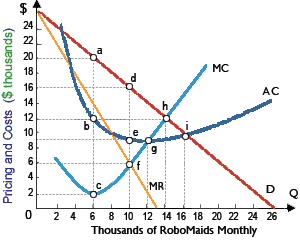When Robomatic Corporation maximizes profit within its production of RoboMaids, so its monthly total costs will be around: (i) $40 million. (ii) $65 million. (iii) $90 million. (iv) $105 million. (v) $130 million.

Can someone explain/help me with best solution about problem of Economics...